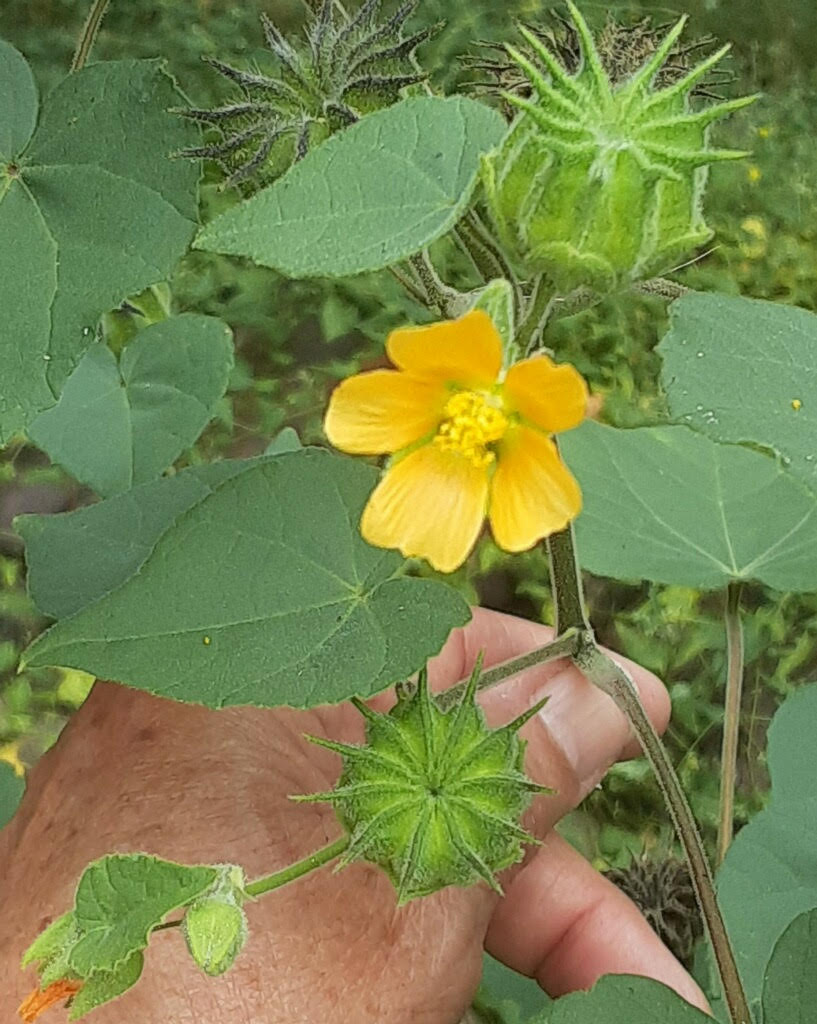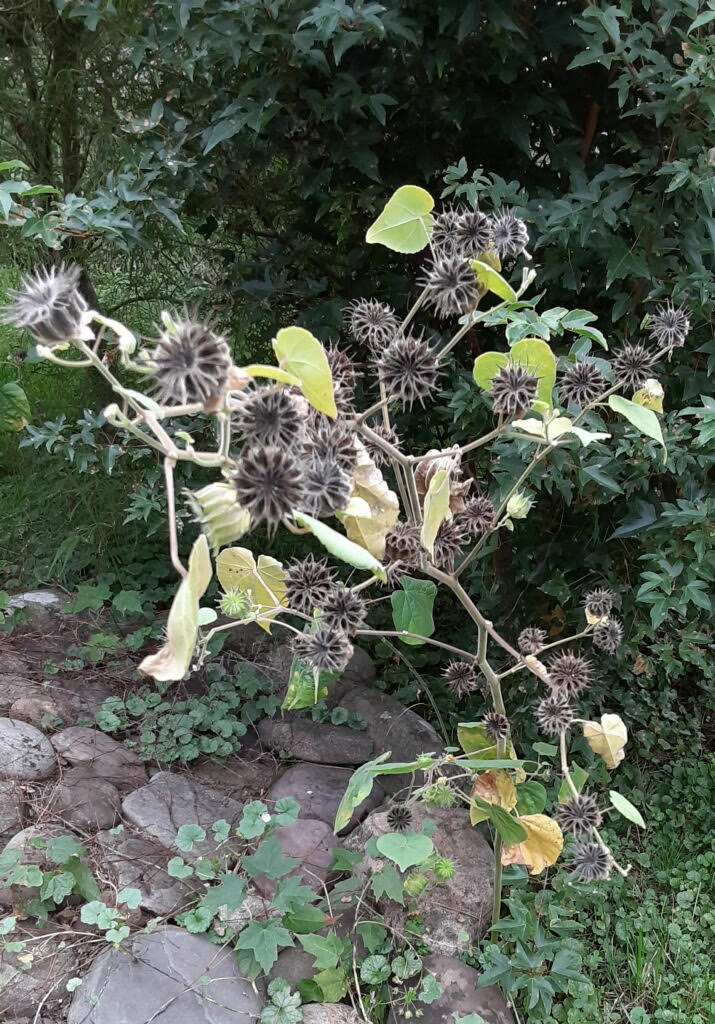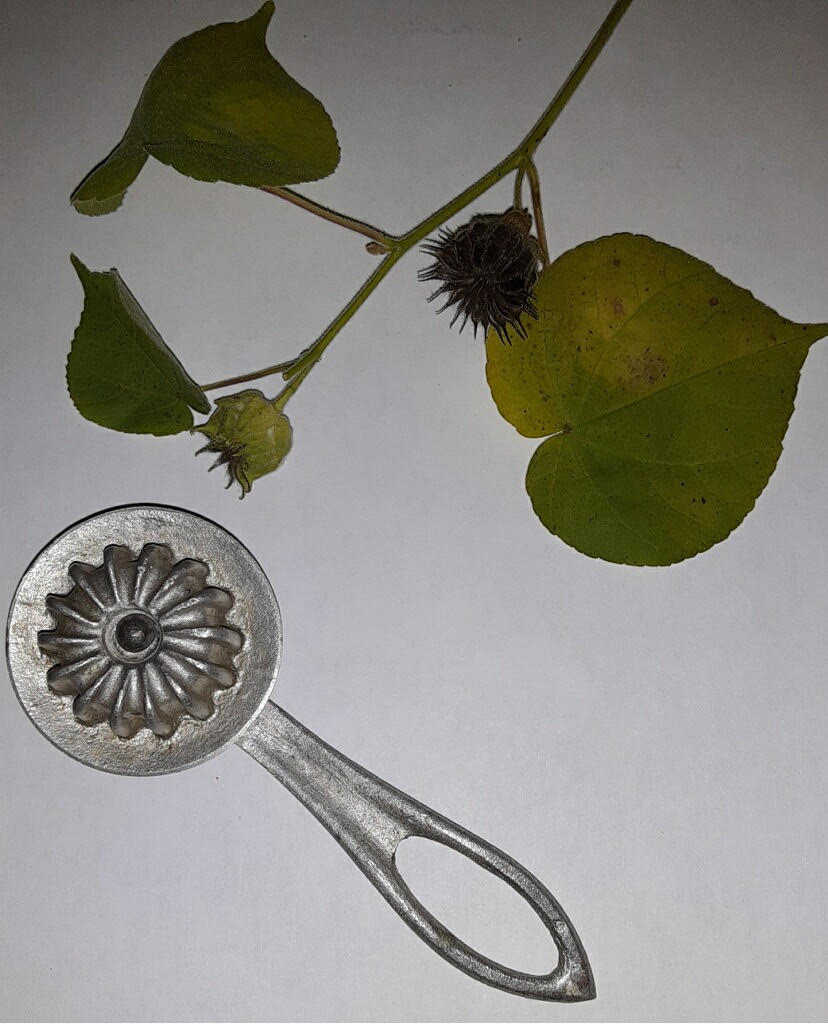By Susan Sprout
It is autumn – time to find your pie marker and get baking those yummy apple pies. What! No pie marker?
There is a type of plant that grows around here, commonly known as Pie Markers. The resemblance of their strangely-shaped seed capsules to the baking tools used for marking or fluting or crinkling the upper edges of pie crust is, well, remarkable! I was taught by my gram to use the pinch-finger technique for crimping my crust edges and have never owned a pie marker. Until now! Thanks to the owner of the antique store in Pennsdale, I have an example to show you.

The Pie Marker plant was brought to this continent in the 18th century to be cultivated for its strong, jute-like fibers for making string, ropes, rugs. Indigenous to India and grown in China from around 2000 BCE, known as Qing Ma, it was used medicinally for an antiseptic, an astringent, and as a demulcent – think “soothing”. The fiber business went bust, and we now have a plant whose seed output yearly (per plant) can top 15,000, depending on height – which can be up to five feet tall, having many downy branches, eight-inch velvety leaves, and lots and lots of five-petaled yellow flowers. The pollinated flowers create the seed capsules made up of twelve to fifteen segments that form the round “pie markers”.

Pie Marker AKA Pie Maker AKA Abutilon theophrasti AKA Velvet Leaf AKA Indian Hemp AKA…I found eleven common names so I’ll quit now… is considered a damaging weed to agricultural crops like corn and soybeans because of its competitiveness over nutrients and water plus the fact it harbors maize and tobacco pests and soybean diseases. There are many other plants in the Mallow Family – okra, cotton, ornamentals like Rose of Sharon, Hollyhocks and Hibiscus – that are “positive” members of our plant community.

I may have inadvertently spread Pie Marker seeds on my property after collecting the pods for a dried flower arrangement. I found them growing on the edge of a field. They seem to like disturbed places like edges, compost heaps, and alongside buildings in town. They added a lot to the arrangement. But, I will have to be vigilant weeding new plants as they appear next spring. Their seeds can remain viable for 50 years in dry soil. I guess that will keep me busy for the rest of my life!

